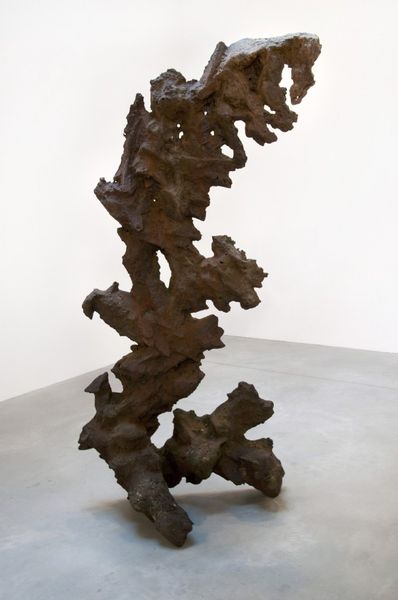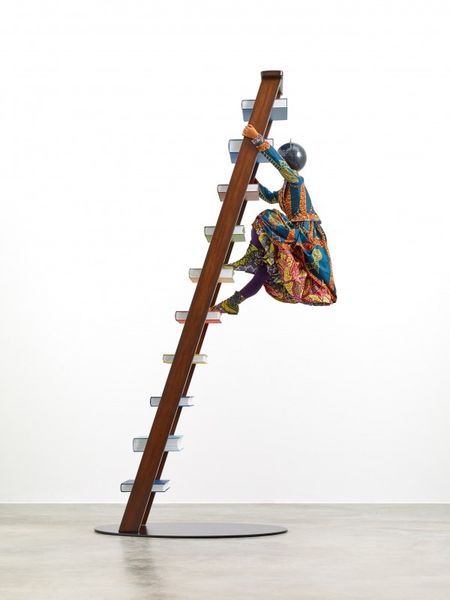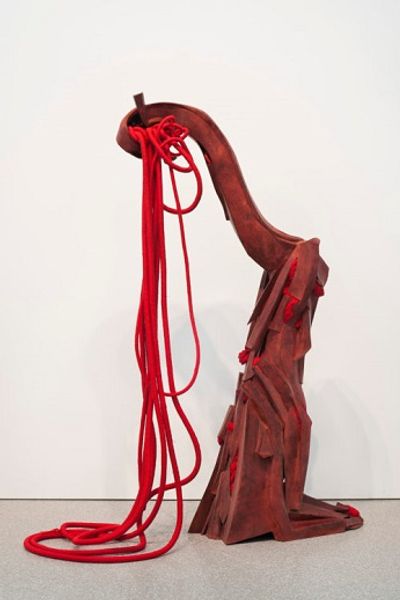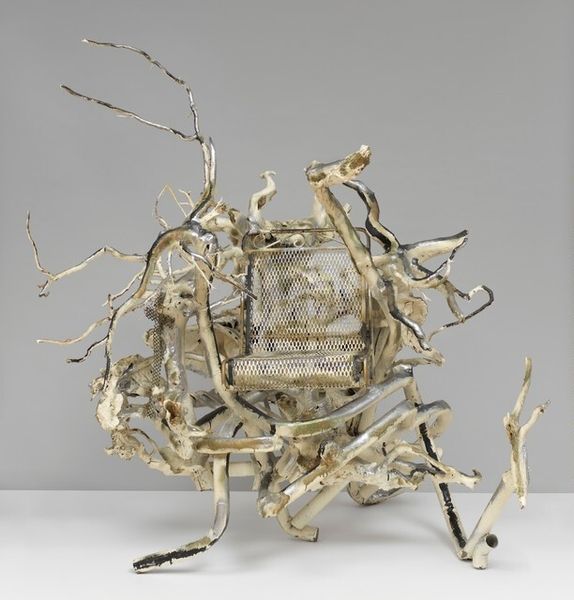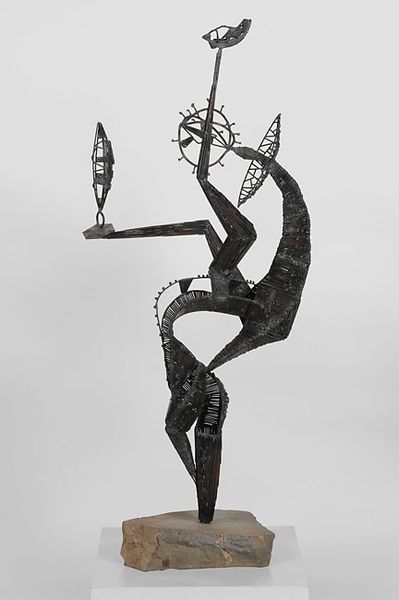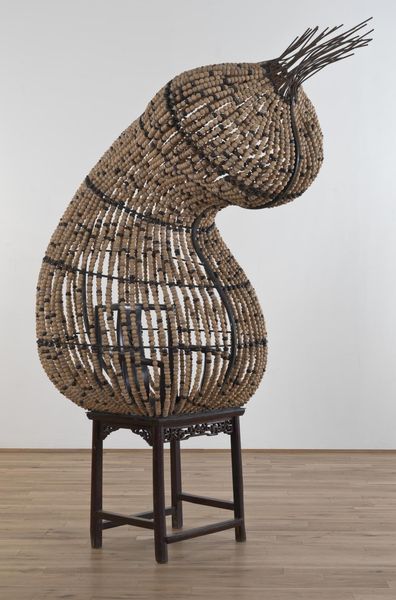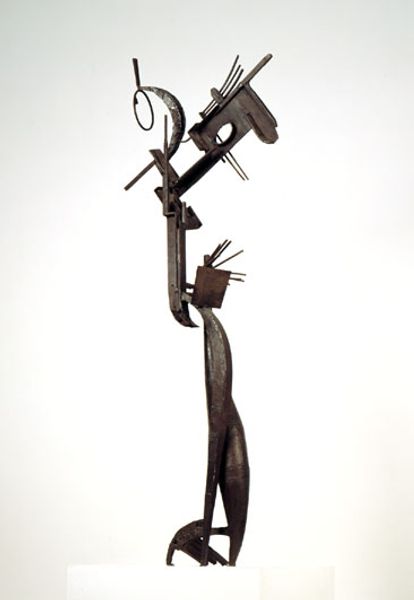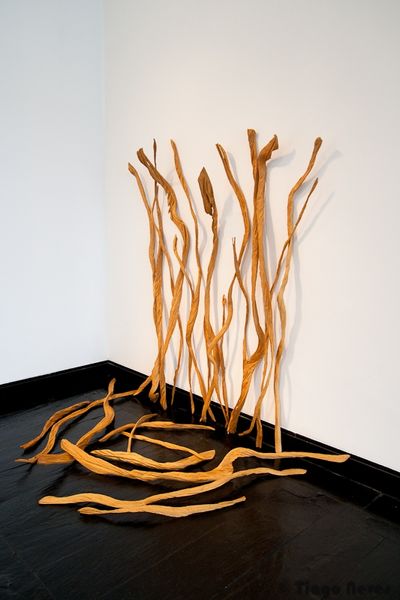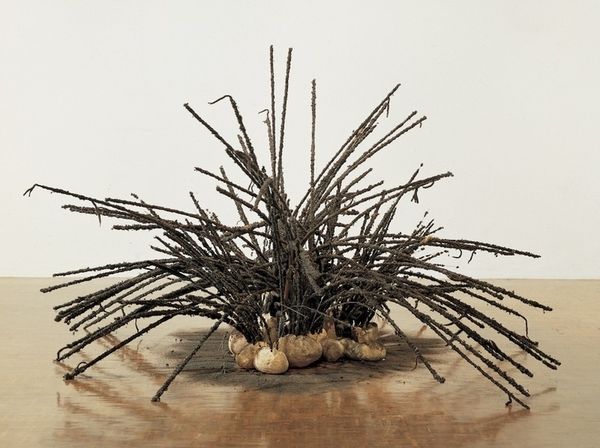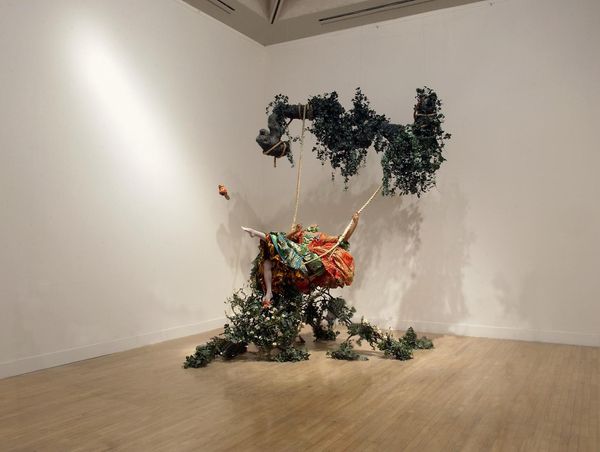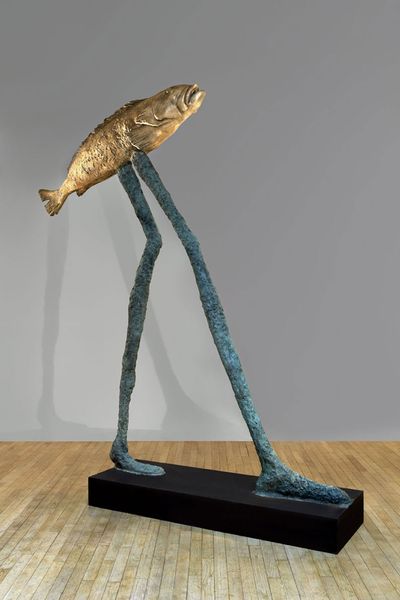
Copyright: Nancy Graves,Fair Use
Editor: Here we have Nancy Graves's sculpture, "Cantileve," from 1983, made from mixed media including metal and wood. It’s currently at the Whitney. It's such a bizarre form – like a strange mechanical tree. What do you make of this piece? Curator: This is a fascinating sculpture. Graves consistently uses a visual language of seemingly disparate forms to evoke powerful feelings. Look at how she juxtaposes geometric shapes with more organic, flowing lines. The colors, too, clash in a way that's almost jarring but somehow harmonious. Doesn't it evoke something primal for you? Editor: I can see the tree-like element, with what looks like roots and branches, so, yes, it hints at the natural world. But the materials—the metal and what looks like machine parts—make it industrial too. Is this contrast important to consider? Curator: Absolutely. Graves is playing with archetypes of nature versus artifice, exploring how we try to reconcile these opposites within ourselves. Do you see how she places these constructed shapes against the abstracted ‘natural’ forms? Editor: Yes, that contrasting symbolism creates a sense of tension, perhaps a reflection of our own internal conflicts in a technology-driven world. Curator: Precisely. Consider the title too— "Cantileve." It suggests balance, yet the sculpture is incredibly asymmetrical. She’s constantly using symbolism to question our established notions. Editor: I never would have thought about it that deeply. I guess there's more to those initial strange forms than meets the eye! Curator: Always! Symbols speak across time. Hopefully it encourages us to explore the rich symbolic layers that can speak to us through an artist’s individual vocabulary.
Comments
No comments
Be the first to comment and join the conversation on the ultimate creative platform.

